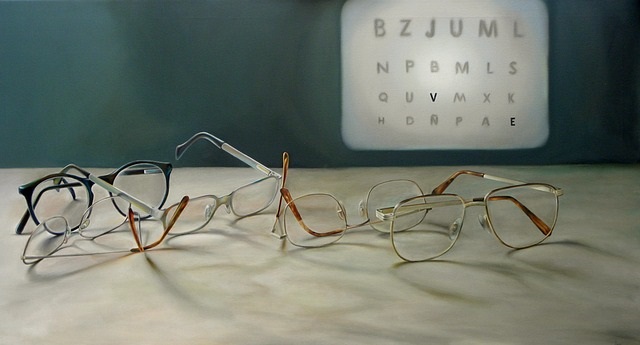Introduction
Are you planning to purchase a pair of photochromic lenses? Well, before purchasing a pair of photochromic lenses, you must go through the detailed information about them that we are going to discuss in this blog. In this blog, you will provide all the necessary information about photochromic lenses, including: -
- What are photochromic lenses?
- Advantages and disadvantages of photochromic lenses
- Uses of photochromic lenses
- How to check photochromic lenses?
- Difference between photochromic and transition lenses
- How do Photochromic lenses work?
- Who should use Photochromic Lenses?
- How to choose Photochromic lenses?
What are Photochromic Lenses?

Photochromic lenses are optical lenses that change color usually turn darker when exposed to ultraviolet (UV) light. When photochromic lenses are exposed to ultraviolet (UV) light, trillions of photochromic molecules in the photochromic lens begin to change their structure. This chemical process enables the lens to change its colour of the lens. The change of colour is usually to a dark shade of Grey or Brown.
What is the purpose of photochromic lenses?
The main purpose of photochromic lenses is to have spectacles with or without prescription and protective spectacles that remain clear indoors and turn dark in sunlight. The UV component in the sun's light activates the darkening process. When you move out of sunlight, the absence of UV light indoors begins the fading of the dark colour back to clear.
What colours are photochromic lenses available in?
Grey and Brown are conventional colours in which most photochromic lenses are available. However, today you can find lenses that turn into darker shades of Blue, Green, and violet as well. Darken.
Specialist brands of sunglasses like RayBan ® have a series of ready-to-wear eyewear with fun colors like pink, amber, yellow, etc that turn into dark shades on being exposed to sunlight. These are great party wear eyewear for the young and happening people that also act as stylish sunglasses. This is known as the Evolve series of RayBan.
What are photochromic lenses made of?
Photochromic lenses are made up of molecules composed of trace amounts of silver chloride. When silver chloride is exposed to UV radiation, the molecules become silver metal. This allows the lenses to absorb visible light and turn darker in this process.
In addition to this, photochromic lenses are also made of copper chloride, which strips the silver of its chloride electron. It enables the lenses to return to their original clear state in the absence of UV radiations.
Modern photochromic lenses also contain organic molecules known as Naphthopyrones, which is used instead of silver chloride. Naphthopyrones change their molecular structure when ultraviolet light strikes them and darkens the lenses.
What are the advantages of Photochromic lenses?
In this section of the blog, we will discuss the most common advantages of Photochromic lenses.
1. Reduced costs – You can purchase dual-purpose photochromic glasses that can give you clear vision both indoors and outdoors. Hence, it is more cost-effective than buying two separate pairs - one clear spectacle for indoors ad one prescription sunglasses for the outdoors.
2. UV protection – Photochromic lenses provide you with full protection against direct exposure to sunlight and harmful UV rays that can cause serious eye problems.
3. Healthy Eyes – Photochromic lenses also help maintain your overall eye health. For instance, one particular brand of photochromic lenses, Transitions ®, in their top-of-the-line series incorporates a technology that also protects your eyes from blue light from devices and LEDs. It also reduces exposure to UV rays that can lower the risk of cataracts or other eye-related problems. Hence, modern-day, top-of-the-line Transitions photochromic lenses offer the most complete eye protection lenses today.
What are the disadvantages of Photochromic lenses?
Let’s discuss a few of the common disadvantages of Photochromic lenses: -
- Reaction Times – Photochromic reaction from clear to sunglasses takes 30-60 seconds from clear to sunglasses, but the reversal takes a little longer. For instance, it takes about 5-10 minutes to return to clear.. Therefore, it can be disadvantageous if entering a dark room or certainly inconvenient.
- Problems while Driving – By now, you must have understood that the photochromic lenses need UV rays exposure to activate and darken. Therefore, the standard photochromic lenses don’t work inside a car as the windscreen blocks the Ultraviolet rays, which are needed to activate the chemical process to darken the lenses. Hence, these lenses do not work well while driving a car.
However, special photochromic lenses are also available today that can even react inside a car and behind the glass. These specialised lenses are known as “transition ® xtractive lenses” that become partially dark inside a car.
- Not dark enough – There is no doubt that photochromic lenses help you block the harmful UV rays and protect you from the sun's glare. But these lenses do not become as dark as top-of-the-line specialist sunglasses. The new generation of Transitions ® lenses has the potential to become almost as dark as traditional RayBan ® sunglasses, but the intensity of darkness of a transition ® lens would depend upon the amount of UV radiation in the atmosphere. Hence, how dark a photochromic lens will become is sometimes not predictable.
IF you are looking for sun protection and are highly sensitive to light or high light conditions or are looking for predictable darkness of sunglasses under all light conditions, then photochromic lenses may not be an ideal solution.. Therefore, you can consult with an optician or eye specialist before wearing Photochromic lenses if you are suffering from any light conditions.
- These lenses are also affected by the amount of UV light in the atmosphere weather. This means that it takes more time to get dark as well as the darkness may vary in different climatic conditions.
- Photochromic lenses are not polarized, leading to harsh glares of sunlight. Therefore, if you are looking for spectacles or sunglasses that cut the harsh glare of sunlight then, they may not be ideal for you.
How to check photochromic lenses?
Since photochromic lenses are reactive to the sun’s UV radiation, the easiest way to check whether the photochromic technology is used in the lenses or not is by testing the glasses in sunlight. After coming in contact with the Ultraviolet rays, the photochromic particles should activate in 20 to 30 seconds and darken. Difference between photochromic and transitions ® lenses
Transitions ® is a brand of Photochromic lenses owned by Essilor ®, now a part of the larger eyewear conglomerate Essilor-Luxottica ®. In addition to this, photochromic lenses are also known as transition lenses because Transitions ® is the most popular brand of these photochromic lenses today. Hence, the terms – photochromic lenses and transition lenses are used interchangeably sometimes.
How do Photochromic lenses work?
Usually, regular sunglasses block out a particular wavelength of light with colored filters or polarization. On the other hand, photochromic lenses are carbon-based, and the molecules react to the Ultraviolet rays and change their shape and absorb the light. In this process, the lenses become darker. Hence, the more UV rays exposed, the darker the lenses will become. Moreover, it can take about 30 seconds to darken the lenses, and it can take between two to five to ten minutes to return to the normal after going back indoors. Hence, we hope that now you have understood how photochromic lenses work.
Who should use Photochromic Lenses?
Photochromic lenses can be worn all day like normal glasses, and anybody can benefit from them. Moreover, these are even more beneficial for those who regularly interchange from indoors to outdoors. Also, a pair of photochromic lenses work outside and inside the doors. Therefore, photochromic lenses are ideal for the different levels indoors and outdoors since these are the clear lenses that react to ultraviolet rays. Hence, they are able to change colours based on the intensity of the light.
With the additional advantage of Blue Light protection is some brands of modern-day photochromic lenses, one should opt for these lenses instead of clear spectacles if the budget allows and there is no inhibition of wearing spectacles that change colour. These are the most protective eyewear for most day-to-day living conditions in our modern lifestyles.
How to choose Photochromic lenses?
You should consult an eye care professional to choose photochromic lenses. The eye care professionals can help you find the best eyeglasses that will work according to the requirement of your eyes. Hence, please ensure that you consult a reliable eye care professional before choosing any lenses. In addition to this, you can also get in touch with the R Kumar Opticians for consultation.
FAQ's
Typically photochromic lenses could cost 10-40% higher than your clear spectacle lenses. There are a variety of options and the cost could vary depending on the maximum intensity of darkness that a photochromic lens can achieve, the reaction times, and additional features like blue light protection.
On the contrary, photochromic lenses are the most beneficial spectacle lenses in modern-day lifestyles. Photochromic lenses can be very helpful for the eyes as they protect your eyes from harmful UV radiation while certain brands of photochromic lenses also guard the eyes against blue light from modern-day devices and LED lighting. . Hence, they also protect your eyes against harmful blue light exposure. Therefore, photochromic lenses are not bad, rather they are good for the eyes.
One specific brand of photochromic lenses has the potential to protect from blue light emitted by modern-day devices and LED lighting. Therefore, they can be great for computer work.
Photochromic lenses are not the same as anti-glare lenses, but they can be enhanced to be anti-reflective. Hence, with the help of additional treatments like AR coatings for cutting the internal glare of a lens and scratch resistance.

Share:
Focus On The Task At Hand With Bifocal Lenses
Polarized vs. Non-polarized Sunglasses - Which one is better?